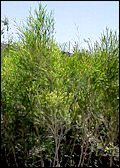Whether you accept it, avoid it or live somewhere in between, insurance coverage has become a defining issue for our profession. Patients increasingly expect to use their benefits, practitioners want to be compensated fairly for their time and expertise, and the system itself remains – at best – fragmented. The encouraging news is that coverage has expanded in meaningful ways. The challenging news is that reimbursement, across the board, remains inadequate.
Vitamins, Minerals and Dietary Supplements
Tea Tree Oil
What is tea tree oil? Why do we need it?
Tea tree oil is a type of aromatic oil that comes from melaleuca alternifolia, a species of tree that grows only in Australia. The oil gets its name from an incident in the 18th century, in which a group of British explorers attempted to brew a tea from the tree's leaves. In reality, though, melaleuca alternifolia is not related to camellia sinensis, the tree that is the usual source of tea leaves.
The main ingredient in tea tree oil is terpinen-4-ol, an active chemical that displays powerful antibacterial properties. Good quality tea tree oil usually contains 40 percent or higher levels of terpinen-4-ol. It is usually applied topically to treat skin infections, cuts, scrapes, bruises, insect bites, and bee stings. In addition to promoting healing, tea tree oil can reduce the incidence of scarring caused by cuts and scrapes.
 Tea tree oil has a variety of other medicinal uses. It is effective in treating the trichophyton fungus, which is responsible for infections such as athlete's foot and jock itch, and can reduce the length and severity of vaginal yeast infections. Other studies have shown that tea tree oil can reduce the severity of acne, and can kill head lice and a type of fungus that causes dandruff.
Tea tree oil has a variety of other medicinal uses. It is effective in treating the trichophyton fungus, which is responsible for infections such as athlete's foot and jock itch, and can reduce the length and severity of vaginal yeast infections. Other studies have shown that tea tree oil can reduce the severity of acne, and can kill head lice and a type of fungus that causes dandruff.
How much tea tree oil should I take?
The amount of tea tree oil to be used depends on the condition being treated. For minor skin wounds and insect bites, some practitioners recommend one or two drops applied to the affected area two to three times per day (after the wound is cleansed). Tea tree oil can also be applied to a person's nails to treat nail infections, or applied to gauze and taped over an affected area. Larger amounts (approximately 20 drops) can be used if tea tree oil is being incorporated into a foot bath to treat athlete's foot or related infections.
What forms of tea tree oil are available?
Tea tree oil is available primarily as an oil, and sometimes as part of a topical antifungal ointment. Many skin care products and beauty products also contain tea tree oil in varying amounts. When buying tea tree oil, make sure that the oil is derived only from maleleuca alternifolia. Oil from other species may irritate the skin.
What can happen if I take too much tea tree oil? Are there any interactions I should be aware of? What precautions should I take?
Tea tree oil is for external use only, and should never be applied near the eyes or ingested. People who accidentally ingest tea tree oil are advised to contact a doctor or poison control center immediately. Tea tree oil can also cause skin irritations or allergic reactions in sensitive individuals. Should either of these conditions occur, discontinue use immediately.
As of this writing, there are no known drug interactions associated with tea tree oil. As always, however, make sure to consult with a licensed health care provider before taking tea tree oil or any other dietary supplement or herbal remedy.
References
- Bassett IB, Pannowitz DL, Barnetson RS. A comparative study of tea-tree oil versus benzoylperoxide in the treatment of acne. Med J Austral 1990;153:455-8.
- Brown DJ. Phytotherapeutic approaches to common dermatological conditions. Quart Rev Natural Med Summer 1998;61-73.
- Carson CF, Cookson BD, Farrelly HD, et al. Susceptibility of methicillin-resistant staphylococcus aureus to the essential oil of melaleuca alternifolia. J Antimicrobial Chemother 1995;35:421-4.
- Knight TE, Hansen BM. Melaleuca oil (tea tree oil) dermatitis. Med J Australia 1994;30:423-7.
- Syed TA, Qureshi ZA, Ali SM, et al. Treatment of toenail onychomycosis with 2% butenafine and 5% melaleuca alternifolia (tea tree) oil in cream. Trop Med Intl Health 1999;4:284-7.


